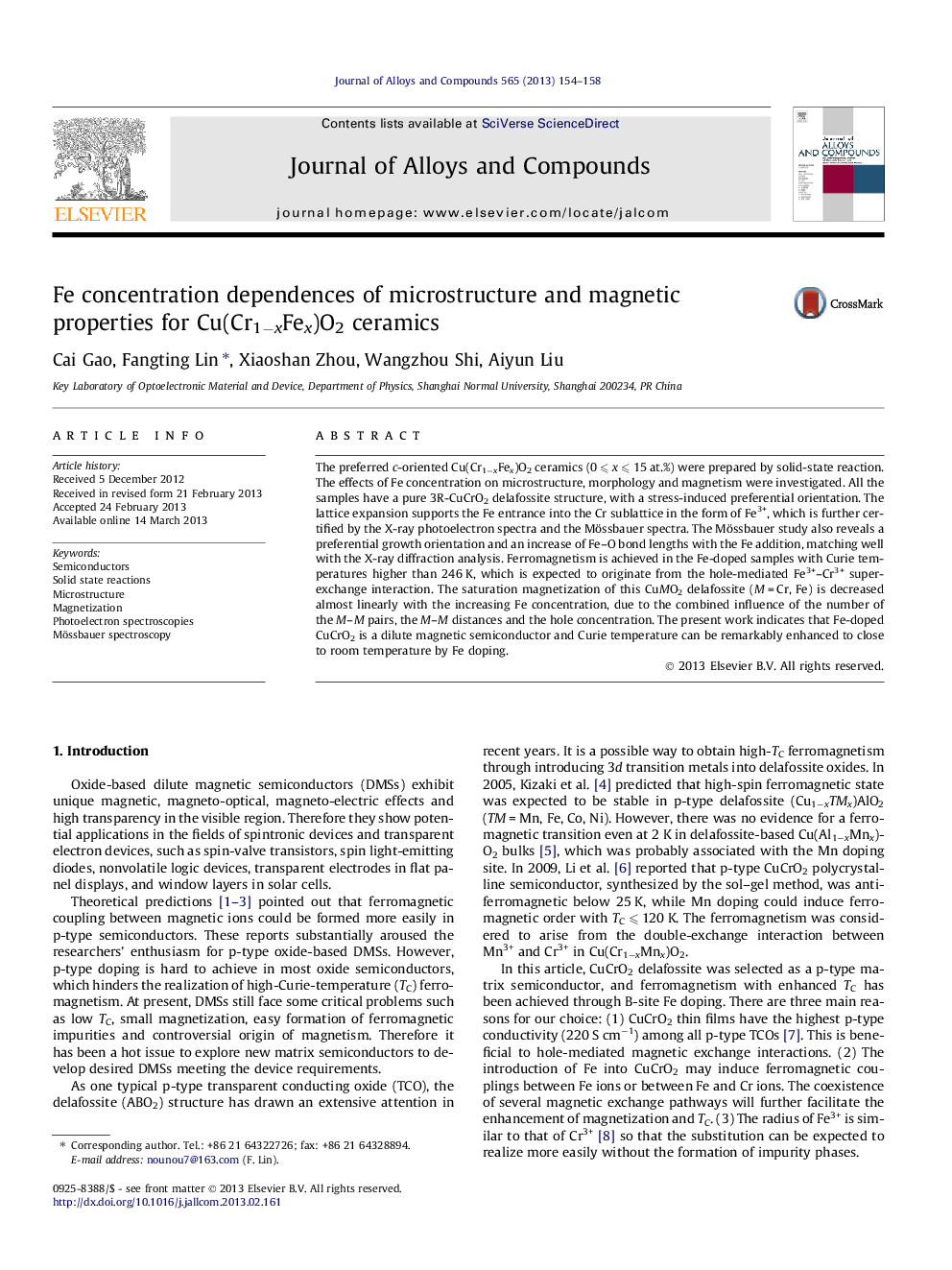| Article ID | Journal | Published Year | Pages | File Type |
|---|---|---|---|---|
| 1614303 | Journal of Alloys and Compounds | 2013 | 5 Pages |
•The first study on the Fe content dependence of ferromagnetism in Cu(Cr1−xFex)O2.•Fe is confirmed to replace Cr3+ as Fe3+ by XRD, XPS and Mössbauer spectroscopy.•Hole-mediated Fe3+–Cr3+ super-exchange mechanism produces ferromagnetic behavior.•Curie temperature can be greatly enhanced close to room temperature by Fe doping.•Fe doping is an effective way for the dilute magnetism of CuCrO2 delafossite.
The preferred c-oriented Cu(Cr1−xFex)O2 ceramics (0 ⩽ x ⩽ 15 at.%) were prepared by solid-state reaction. The effects of Fe concentration on microstructure, morphology and magnetism were investigated. All the samples have a pure 3R-CuCrO2 delafossite structure, with a stress-induced preferential orientation. The lattice expansion supports the Fe entrance into the Cr sublattice in the form of Fe3+, which is further certified by the X-ray photoelectron spectra and the Mössbauer spectra. The Mössbauer study also reveals a preferential growth orientation and an increase of Fe–O bond lengths with the Fe addition, matching well with the X-ray diffraction analysis. Ferromagnetism is achieved in the Fe-doped samples with Curie temperatures higher than 246 K, which is expected to originate from the hole-mediated Fe3+–Cr3+ super-exchange interaction. The saturation magnetization of this CuMO2 delafossite (M = Cr, Fe) is decreased almost linearly with the increasing Fe concentration, due to the combined influence of the number of the M–M pairs, the M–M distances and the hole concentration. The present work indicates that Fe-doped CuCrO2 is a dilute magnetic semiconductor and Curie temperature can be remarkably enhanced to close to room temperature by Fe doping.
Graphical abstractFigure optionsDownload full-size imageDownload as PowerPoint slide
